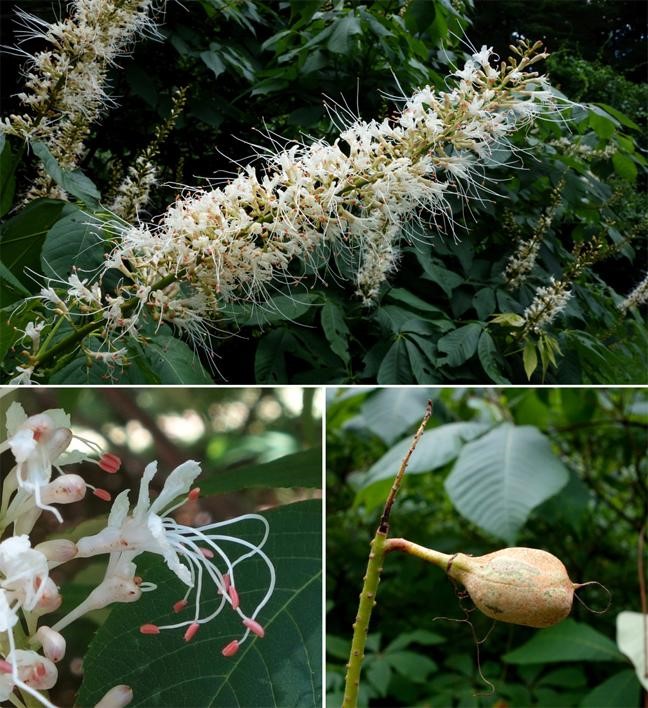Think back to late spring and early summer and conjure an image of the floral display in the buckeye and horse-chestnut (the genus Aesculus) collection at the Arnold Arboretum. The trees were filled with huge clusters (thyrses) of flowers. Now fast forward to September. The fruits are reaching their full magnificence: large and pear-shaped on the hybrid Aesculus pavia x flavia, oddly-shaped with hooked spines on Aesculus glabra (Ohio buckeye), textured with a corky surface (much like a cantaloupe) on the Japanese horse-chestnut (Aesculus turbinata). However, there are just a handful of fruits on each tree or shrub―perhaps only one fruit has developed per hundred flowers. What gives?
This is the very question Charles Darwin pondered just six months after On the Origin of Species was published. In a letter (May 22, 1860) to his great friend and colleague Joseph Hooker, Director of the Royal Botanic Gardens, Kew, Darwin noted that most of the flowers on his horse-chestnut trees at Down House produced pollen in abundance, but had rudimentary (abortive) seed-producing parts, and hence, were functionally male. A “great and curious blunder in dame nature” as he so memorably put it.
“[O]n all my trees there has been a gigantic crop of quite useless male flowers, with millions of pollen grains wasted, for there is not a female flower nearly open.” Production of male flowers in addition to hermaphrodite flowers (andromonoecy) allows individual plants to potentially sire (pass genes on to) additional progeny (on other plants) at relatively low cost. A pollen grain is far less expensive (metabolically) to produce than a large fruit. The difference between motherhood and fatherhood, at a botanical level!
Pictured here is an inflorescence of Aesculus parviflora, the bottlebrush buckeye (558-2003*C), with a close up of one of the flowers (wonderful curling stamens), and a lone fruit on a former inflorescence stalk (12542*A) that bore several hundred flowers. I have gathered some of my images of Aesculus at the Arnold Arboretum from the past few years here.
